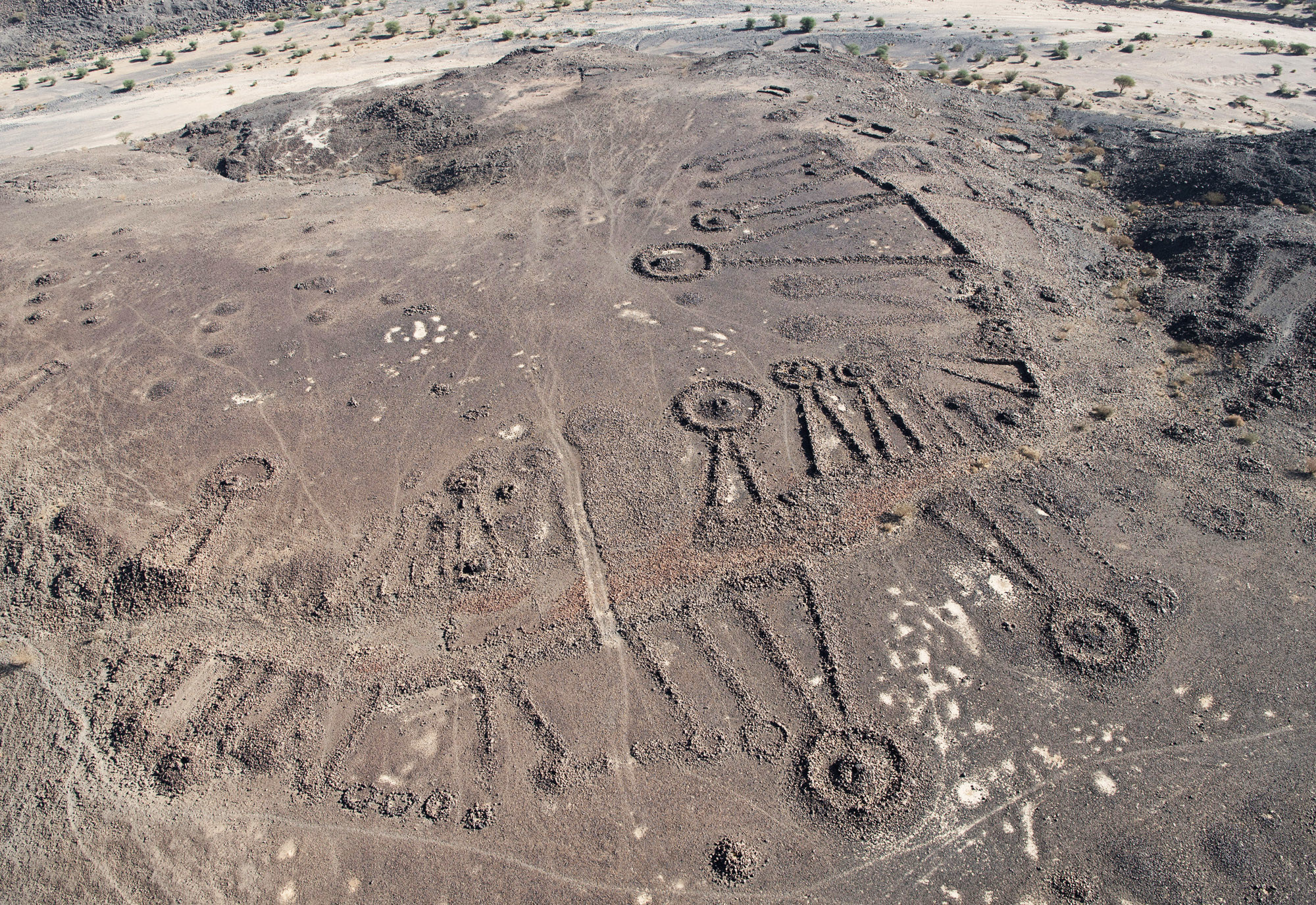
A dense ‘funerary avenue’ flanked by Bronze Age tombs, leading out of al Wadi Oasis near Khaybar in north-west Saudi Arabia.
As the Saudi Arabian regime opens its doors to the west more progress can be made on understanding ancient archeology in the Arabian areas. A recent finding this year is a deeper understanding into the strange burial highways, a series of pendant tomb graves along travelling routes, called funerary avenues. They are located in the same area as Saudi Arabian’s giant mirrored music hall called Maraya.
Why did the ancients, our ancient ancestors mark major byways with thousands of burial monuments? Why are they shaped like pendants and what stories do they tell?
Archaeologists from the University of Western Australia (UWA) working in Saudi Arabia under the Royal Commission for AlUla (RCU) have determined that the people who lived in ancient north-west Arabia (and not aliens!) built these long-distance ‘funerary avenues’.
These routes are major pathways flanked by thousands of burial monuments that linked oases and pastures, reflecting a high degree of social and economic connection between the region’s populations in the 3rd millennium BCE.

A dense ‘funerary avenue’ flanked by Bronze Age tombs, leading out of al ‘Ayn Oasis near Khaybar in north-west Saudi Arabia.
Publication of the findings appear in the journal The Holocene sheds light on the lives of the ancient inhabitants of Arabia.
What do these strange pendant tombs mean?
The existence of the funerary avenues suggests that complex social horizons existed 4,500 years ago across a huge swathe of the Arabian Peninsula, the researchers report. They also document that there are big hidden stories to be uncovered about the ancient kingdoms and earlier societies of north Arabia.
In the recent study, the team used satellite imagery analysis, aerial photography, ground survey and excavation to locate and analyse funerary avenues over an area of at least 160,000 square km in north-west Arabia. They recorded more than 17,800 ‘pendant’ tombs in their primary study areas of AlUla and Khaybar counties, of which around 11,000 formed part of funerary avenues.

A 3rd millennium BCE infilled ringed cairn from the Khaybar Oasis in north-west Saudi Arabia.
Whether on basalt plains or mountain passes, the densest concentrations of funerary structures on these avenues are located near permanent water sources. The direction of the avenues suggests that many were used to travel between major oases, including those of Khaybar, AlUla and Tayma. Other avenues fade into the landscapes surrounding oases, suggesting they were used to move herds of domestic animals into nearby pastures during periods of rain.
The Australian team’s work is part of collective that includes 13 archaeological and conservation project teams from around the world collaborating with Saudi experts in AlUla and neighbouring Khaybar counties in Saudi Arabia.
“The more we learn about the ancient inhabitants of north-west Arabia, the more we are inspired by the way our mission reflects their mindset: they lived in harmony with nature, honoured their predecessors, and reached out to the wider world,” says Amr AlMadani, the CEO of RCU.

A 3rd millennium BC pendant burial on the southern edge of the Khaybar Oasis in north-west Saudi Arabia.
In other ancient news from Saudi Arabia:
- In August in the journal Arabian Archaeology and Epigraphy the team dated the pendant-shaped tombs of the Khaybar Oasis to the 3rd millennium BCE – the first published radiocarbon evidence dating the tombs. Archaeological exploration of the mysteries of Khaybar is still in its infancy.
- The monumental structures known as mustatils are much older than previously believed, dating as far back as 5,200 BCE, and appear to have had a ritual function. What that is, time will tell.
- The Australian team discovered the remains of the oldest known domesticated dog in Arabia.
The Royal Commission for AlUla (RCU) was established by royal decree in July 2017 to preserve and develop AlUla, a region of outstanding natural and cultural significance in north-west Saudi Arabia. RCU’s long-term plan outlines a responsible, sustainable, and sensitive approach to urban and economic development, that preserves the area’s natural and historic heritage, while establishing AlUla as a desirable location to live, work, and visit. This encompasses a broad range of initiatives across archaeology, tourism, culture, education, and the arts, reflecting a commitment to meeting the economic diversification, local community empowerment, and heritage preservation priorities of the Kingdom of Saudi Arabia’s Vision 2030 programme.
